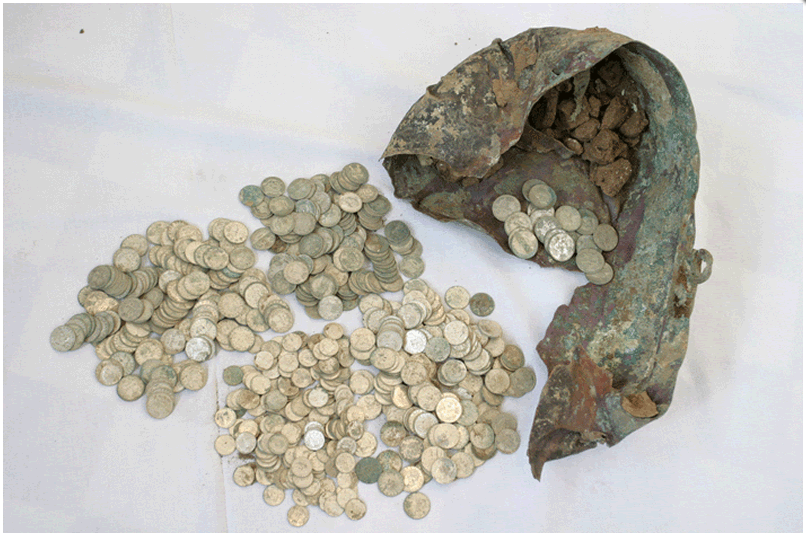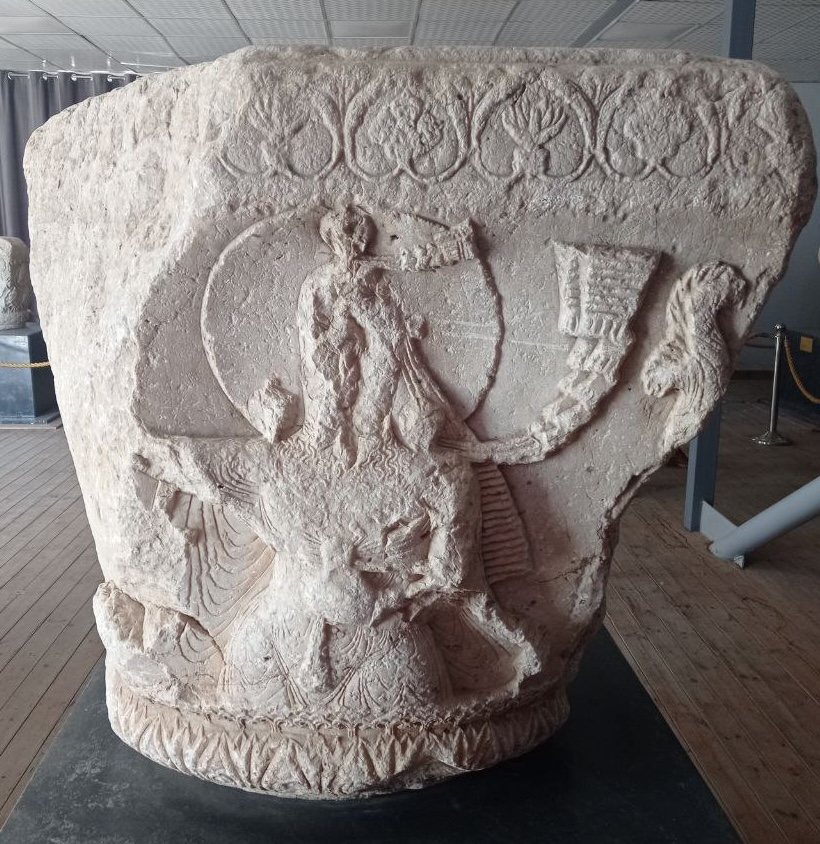Thread: In 1936, two brothers were ploughing a vineyard on the Vinik hill near Niš in South Eastern Serbia. Then suddenly their plough hit a stone. When the brothers started digging around the stone they realised that the stone was a part of a stone wall... 

It turned out that they had stumbled upon a Roman building, which judging by the thinness of the wall was of a temporary character. Which is quite interesting because what was in the building...
A row of pithoi lined the walls. And these were full of leather bags, which were full of Roman coins. According to the witnesses, almost 10 tons of Roman coins. The single biggest hoard of Roman coins ever found... 

The coins were Roman denarii minted between the first and the third century AD. Judging by the state of the coins, they were either used very little or never used. They were packed in separate bags based on the Emperor who minted them and the year when they were minted... 

Based on this it is believed that the two lucky brothers had discovered either a provincial treasury or a military treasury...The fact that apart from coins, the building also contained the moulds for minting coins, confirms this...
The coins were minted from almost pure silver and the hoard contained a lot of rare example never seen before...And judging by the weight, the treasury must have contained over 3 million coins...
I say must have, because no one knows how many coins were actually dug out of the vineyard...The news about the discovery spread quickly. The brothers only reported a "small" amount of coins. Around hundred kilos...The rest was, according to the local informers, hidden... 

Many big world museums, like Louvre, Metropolitan, Berlin museum, British museum...sent their teams to buy coins from the lucky Serbian villagers. And they, not knowing what they have found, sold the coins as "broken silver". Per kilo...
A very small part ended up in Serbian museums. The Niš museum bough 17 kilos and Belgrade museum bought 37 kilos. Believe or not, apparently these coins are still sitting in bags, still not processed or catalogued...(report from 2014)...
esveske.github.io/pdf/2001/z01-3…
esveske.github.io/pdf/2001/z01-3…
Apparently at that time it was "totally normal" to find few hundred coins while digging your field...
• • •
Missing some Tweet in this thread? You can try to
force a refresh























